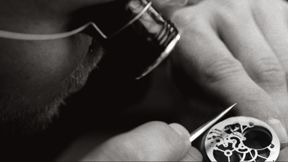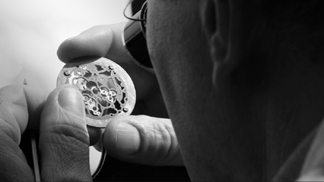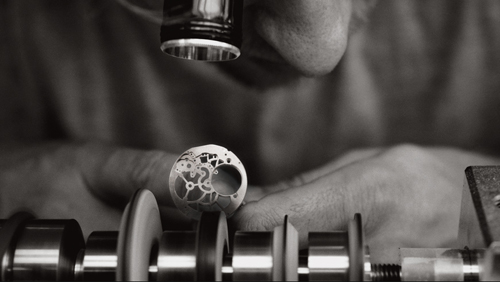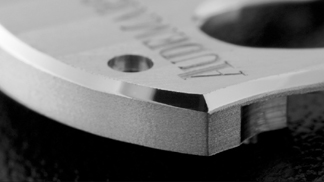Not all watch brands are alike. Some luxury brands employ artisans that spend countless hours toiling on finishing tiny pieces of the movement that most will never see. In fact, it is not uncommon in the world of haute horlogerie for finishers to spend dozens upon dozens of hours cutting base plates and parts, and engraving, polishing and finishing them to incredible artistic standards – event though they are housed inside a case and, often, beneath a dial.
Audemars Piguet, for instance, meticulously crafts each piece of its watch movements in its workshops – moving each plate, bridge, wheel, gear and more from artisan to artisan until it is finished and ready to be assembled into a mechanical wonder that can track time beautifully.
In fact, once the hundreds of tiny parts are precisely cut, the brands well-skilled artisans carry out their work. The first step in making a movement comes into play with the mainplate. Generally, one specialist works solely on the cutting away of much of the mainplate to offer an open-worked piece that can then easily reveal the beauty of the mechanism. Indeed, the purpose of the open work on the mainplate is to enhance the visibility of the myriad of other specially finished movement parts. Key steps factoring into this process include proper beveling and flanking of the rim of the mainplate so the angles shine and offer a shimmering glimpse of the other parts.

The hand workmanship on the movement parts inside an Audemars Piguet movement is a time-consuming job.
With the mainplate cut away and prepared to receive its additional components, artisans begin the process of individually finishing the hundreds of other movement pieces. At Audemars Piguet, a perlage finish is used on the bridges, bars, plates and the recesses of the movement plate. Essentially, in the perlage process, a hand-operated turning rod

Cutting away parts of the movement to create the precise openings necessary to best show off the caliber is meticulous work, inspected after each finishing step.
marks the component surface with extremely close concentric or overlapping circular lines to form the alluring motif. Surfaces not finished in perlage are often linear grained to further underscore or enhance the brilliance of the perlage look. Sometimes the perlage decoration is also utilized on the watch dials.

Pearlage decoration is added to the movement parts and then linear graining complements it — showing off the beauty of the perlage work.
With each movement piece magnificently decorated, finished and polished – the tiny components make their way to the brand’s master watchmakers who then begin the long and ultra-precise job of the movement assembly.







